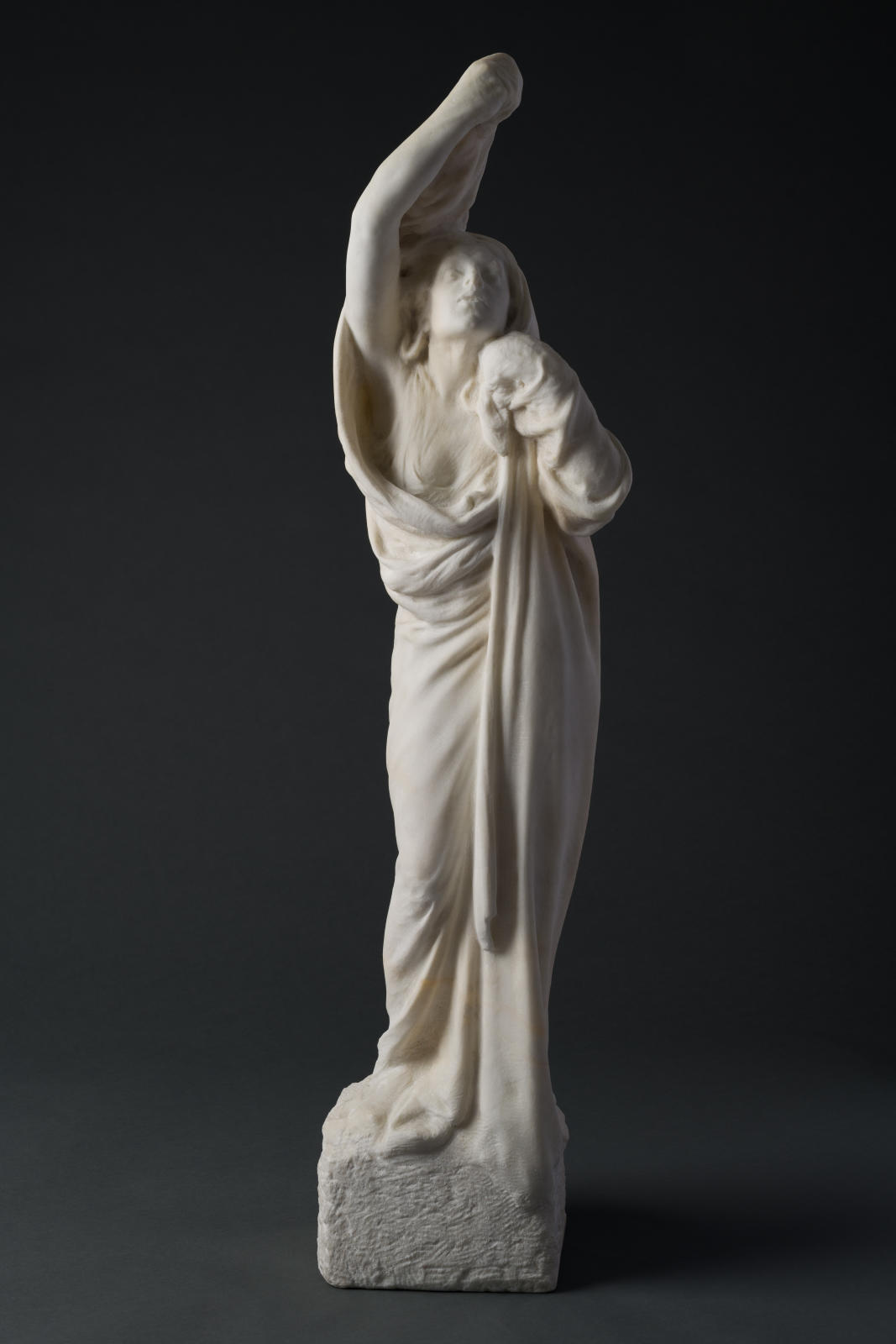artist
Borglum was born in a log cabin near Bear Lake, Idaho on March 25, 1867, the son of Danish immigrants. After growing up in Omaha, Nebraska, he was educated in a Jesuit school in Kansas. At age 17 he went with his family to Los Angeles where he worked as a lithographer and in his leisure began sketching cowboys, Indians and western scenes. He studied in San Francisco during 1885-88 with Virgil Williams at the School of Design, Wm Keith, and Elizabeth Jaynes Putnam whom he married in 1889. The couple moved to Paris for further art study at Académie Julian and Ecole des Beaux Arts. In Paris he began studying painting but soon turned to sculpting, and while there was greatly influenced by Rodin. Borglum exhibited both oils and sculpture of western themes at the Paris Salons of 1891 and 1892, and by 1895 had achieved an international reputation.
In 1902, Borglum returned to the U.S. and his white stone bust of Lincoln was placed in the rotunda of the Capitol. He had studios in New York; Raleigh, North Carolina and San Antonio until 1937 when he bought a home in Santa Barbara, California. He died in Chicago on March 6, 1941 while on a speaking tour and was entombed in the Court of Honor at Forest Lawn in Glendale, California. His most famous work, done from 1927 until 1941, is the heads of Presidents Washington, Jefferson, Lincoln, and Theodore Roosevelt at Mt Rushmore. Over 60 feet high and blasted out of solid granite, his son, Lincoln, finished the work in 1945.
Description
Draped Woman is well-realized marble that speaks to the influence of Rodin and the Symbolist movement in Europe, both of which shaped Borglum’s expressive models of women that he did between 1902 and 1915. It remains a mystery on this piece as to the exact subject and expression of the work. Whether it is a symbolist work and the woman is metaphorically reaching for release, freedom, or freedom from pain and suffering or a better future.
Borglum at this time felt that Rodin had found perfect expression in his forms and Borglum sought to achieve a similar feel in works. The softer approach to drapery rather than an academic one to replicate the folds exactly and the expressiveness of the position and emotional aspect of the face relates to such works as his “I have Piped Unto You and Ye Have not Danced” of 1910 and his “Grief of Motherhood” of 1911. As his work progressed toward 1913 and the year of “The Armory Show” he was executing a number of female forms that were mythological or allegorical in context.
This work could be as late as this time period as well as it still fits the mode in which he was working. Borglum was a major force in the organizing of the 1913 Armory show and while a sculptor who embraced the work of Rodin at this time was considered avant-garde, Borglum was not a modernist by nature.
It is interesting that the Hirschhorn never cataloged, restored, or worked on the piece further from 1966 to the present. It was very dirty and uncared for and has just now been cleaned for its first time. The Hirshhorn has always been recognized for its sculpture selection and for its Rodin works and this would have been a great addition to the floor of the Museum.
A sad commentary on the curation and understanding of American sculpture at such a critical period of evolution of sculpture in America at the turn of the century. It is even more curious in light of Borglum’s work on Mount Rushmore that the museum did not choose to educate the public to a work such as this which is so different in nature but iconic for the sculptor. Borglum was highly empathetic to women, to the lives and struggles and he sought to convey that in his work.
We acquire as many works by this sculptor as we can and feel his work is highly undervalued. We feel he is important and is really an American counterpart to a sculptor such as Rodin. These are the odd disparities that exist in American sculpture due to a lack of its promotion and understanding as an art form, still to this day.
provenance
Jay Chernis, New York to
Joseph H. Hirshhorn, New York, 1961 - 1966
Hirshorn Museum and Sculpture Garden 1966 - 2020
Deaccessioned to benefit the museum’s acquisition program 2020







